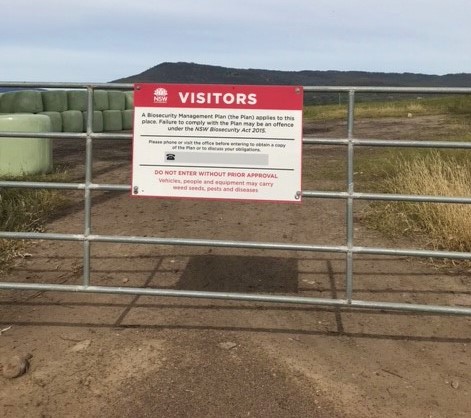Livestock biosecurity after drought
 PRODUCTION ADVICE – MAY 2020 – ANIMAL HEALTH
PRODUCTION ADVICE – MAY 2020 – ANIMAL HEALTH
By Scott Ison
District Veterinarian
P: 03 5881 9917 | M: 0427 362 003 | E: scott.ison@lls.nsw.gov.au
 With all the uncertainty in the world at the moment, agriculture is one industry where there is some real positivity. Widespread rain has given us a good start to 2020, and livestock producers are among those looking to capitalise.
With all the uncertainty in the world at the moment, agriculture is one industry where there is some real positivity. Widespread rain has given us a good start to 2020, and livestock producers are among those looking to capitalise.
We tend to notice a spike in livestock movements after drought as traders find opportunities, breeders look to restock and agistment animals make their way home. These movements always come with an inherent level of risk, but there are a few things you can do to be biosecurity savvy and protect your mobs from potentially devastating diseases.
The first thing to do is look at your farm biosecurity plan. Cattle farmers may have created one of these in 2017 when the new Johne’s system was implemented, or you may have one as part of Livestock Production Assurance. This document should list some of your major biosecurity risks and the steps you take to manage them. Head to farmbiosecurity.com.au for more information and templates. Now could be a good time to review and update your plan.
I like to consider five main diseases when introducing sheep to a property. These are footrot, lice, brucellosis, worms and Johne’s. When considering the risk of a new mob, you can get pretty good information from the Sheep Health Declaration. It also pays to inspect the sheep and ask some pointed questions of the previous manager where possible. We are all learning the value of quarantine and social distancing at the moment, and the same principles should be applied to new mobs of sheep. There is plenty of good information on each of these diseases and more at www.dpi.nsw.gov.au/animals-and-livestock/sheep/health, or you can speak to your veterinarian.
Considerations are much the same for beef cattle. There are several common diseases that regularly cause issues in our region. These include pestivirus, bovine respiratory disease, Johne’s and reproductive disease (leptospirosis, vibriosis, trichomoniasis). Ask for a Cattle Health Declaration. Some other diseases that occur more commonly in cattle on the coast include theileria and cattle tick. Once again, speak to you veterinarian or visit www.dpi.nsw.gov.au/animals-and-livestock/beef-cattle/health-and-disease for more information which can be built into your biosecurity plan.
Making some informed decisions about animal diseases and biosecurity protects your bottom line and helps you meet your legislative requirements. The decisions you make now can have long-lasting effects on the health of your flock or herd and potentially your neighbours’. For more information contact Local Land Services on 1300 795 299.